No Vancouver Special is complete without a pair of guardians at the gate.
Most of the houses have lions, some with shields under their paws, some in the style of Chinese palace gatekeepers with curly manes, standing proud on pedestals. But there are also many pine cones with elegant scales sitting on decorated bases. Fruit bowls and concrete bowls are also common. And just when you think you’ve seen them all, you’ll come across a Vancouver Special fronted by an eagle, a hound, a mermaid or a boy riding a dolphin.
These ornaments are the makings of a very Vancouver charm bracelet strung across houses on residential streets. With over 10,000 Vancouver Specials spanning across the city, and some east-side blocks boasting as many as 10 such houses in a row, the guardians keep watch over every corner of every neighbourhood in the city.
They might not be the statues of Greek gods and goddesses you’d find at the Medici gardens, but there is modern history to be gleaned from the diversity of quirky figurines that for over half a century have become a unique part of Vancouver’s urban fabric.
That history starts with migration and middle-class aspirations.
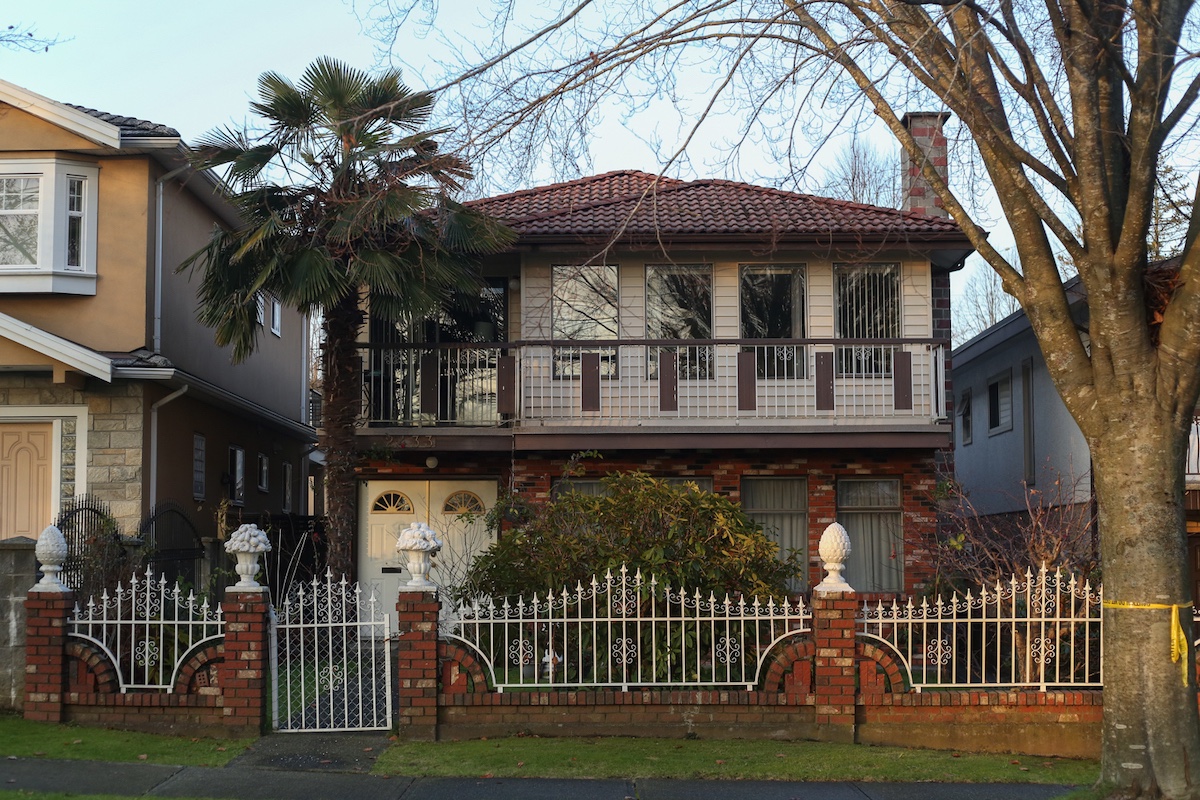
The design of the Vancouver Special was introduced in the mid-1960s, perfectly timed with the boom of newcomers welcomed by the federal Liberals under Pierre Trudeau. While they were despised by the architectural elite, the price and practicality of Specials made them popular. The simple stucco box construction with two roomy and identical storeys made for relatively affordable homes with crucial space for large families to live under one roof.
The big question for the homeowner of a brand new Vancouver Special: do you choose a lion, a pine cone or something else to place out front? Each is a cultural symbol with a lot to say about the families from the East and West who live there.
Whatever the selection, Vancouver Special homeowners would pay a visit to the workshop of Joe Tinucci and his sons. Their fingerprints are all over the city, from the grandest hotels to the humblest of houses.
The Olympian workshop
The last thing everyone notices on Hastings Street before they head up Burnaby Mountain is the yard on the right, crowded with statues and fountains.
There are more Marys and Jesuses than you’ll ever see, standing shoulder to shoulder with saints and angels, all wearing price tags. The Olympians and their children lord over all manner of mythological menagerie, the likes of gargoyles and griffins, but also gnomes and Disney’s dwarves, looking more bashful than ever amongst the classical creations. At the feet of the gods are the little lions, the ones that have been embraced by Vancouverites to watch over the city.
This is Ital Decor, Joe’s business, which has long been a landmark on Hastings Street, a corridor of Italian settlement. Joe had been working in the region since immigrating from Italy in 1956. After opening workshops in Surrey and East Vancouver, he settled in Burnaby, where the business has been since 1979.
His two sons were brought into the craft at an early age. In the office behind the front desk is a black and white photo taken in 1964. Joe is in the workshop with both of them and a statue of Poseidon. Mario, the eldest, looks calm and dapper in a pair of suspenders, while Roberto, a toddler, sits on the shoulders of the god of the sea.
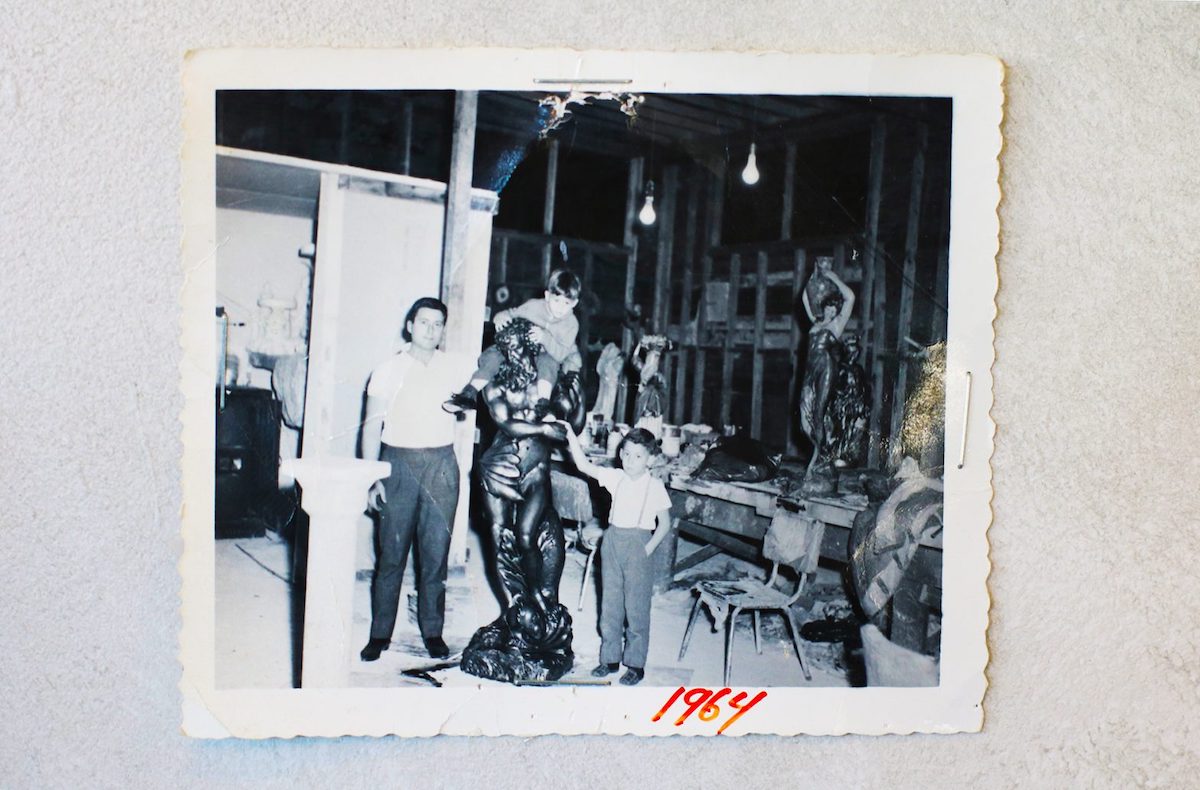
But Joe is no longer around. Since he died in 2008, the two brothers have been running the family business, and they are as busy as ever.
I arrive at the foot of the mountain on a cold November morning with the statues cloaked in fog. Roberto, now 60, is there to welcome me into the warren of workshops and showrooms on the property, where the guardians for Specials are made.
Statues are only one part of the family business. They also restore history.
In the first room, the walls are covered with samples of plaster decorations done in styles from dizzyingly ornate art deco to the châteauesque used for majestic railway hotels. It takes me a minute to realize what they are: models made from the mouldings of the best-known buildings in Vancouver and beyond. Just about every masterwork is here — the Orpheum theatre, the Marine Building, the Empress hotel.
Roberto remembers the Orpheum well. It was a daunting two-year project completed in 1976, and he and his team worked with pieces as large as 48-foot columns. But the restoration was a success, and it was the job that brought the family more business in restoring aging masterworks.
“From there, we haven’t looked back,” said Roberto. “The beauty of it is that we’re local. If someone needs custom pieces, we can manufacture it for them right away, which is an advantage over shipping stuff from across the country or from the U.S.”
There is a pin board nearby with old photos of the Tinuccis and their crews on the balconies of these buildings, sometimes with their shirts off, sometimes covered in plaster. A few of the photos show the assembly of giant statues of nurses for Cathedral Place, which replaced the old Georgia Medical-Dental building. One of the nurses is still in Ital Decor’s yard, looking over Hastings Street.
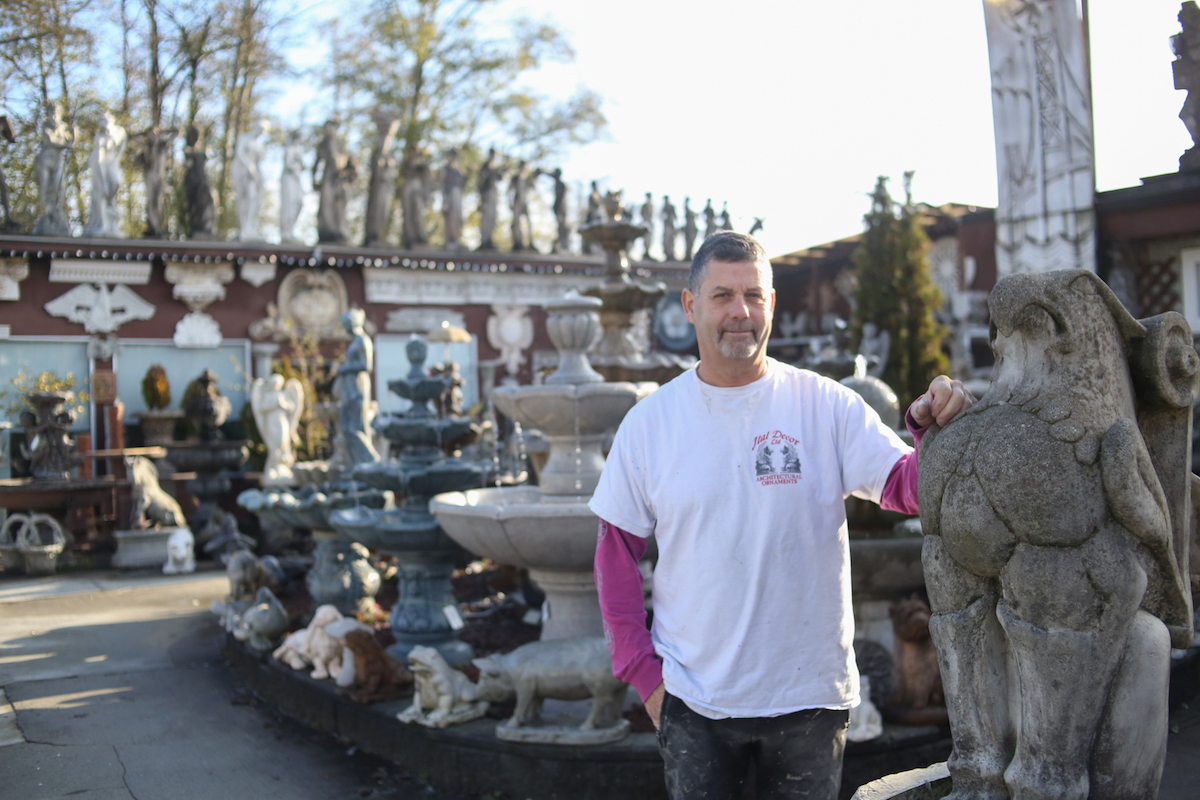
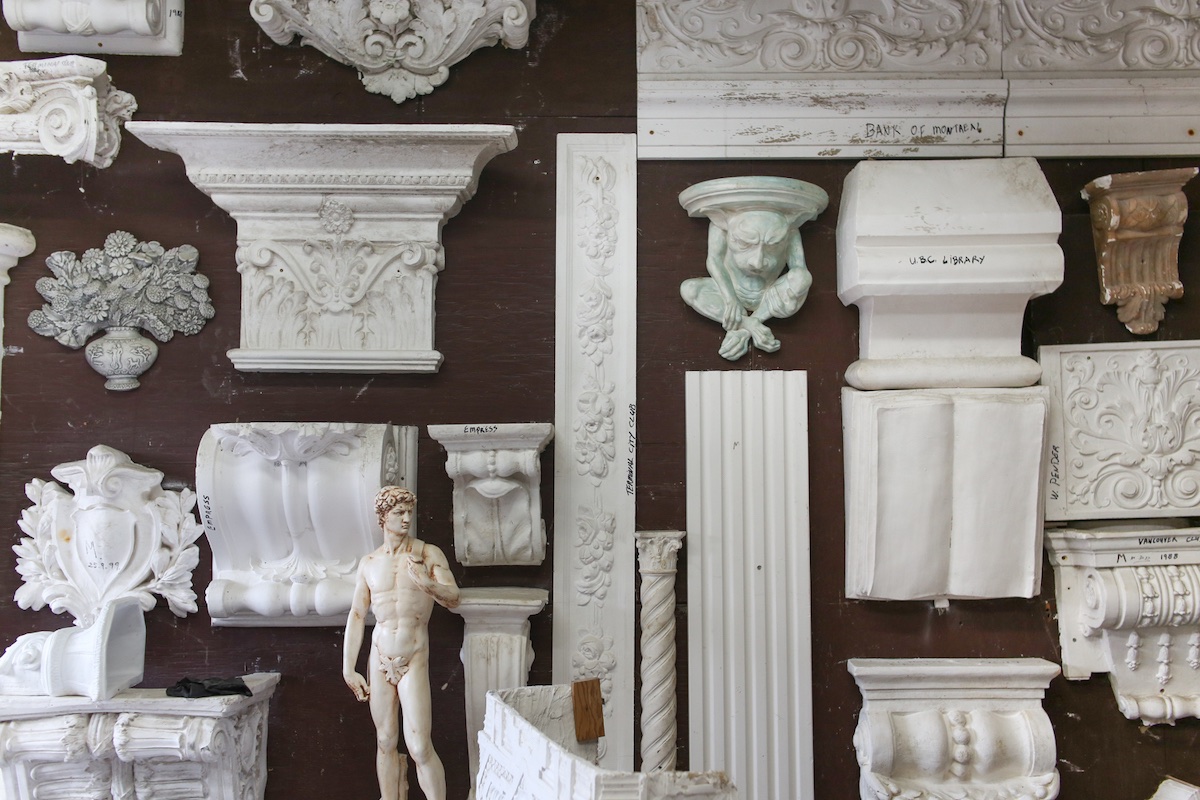
Like many children raised in businesses, the brothers pitched in because they had to.
“Growing up, we had the family training,” said Roberto. “So after school, we could come and help out in whatever way we could. Back then, there wasn’t a lot of money. You couldn’t complain about it. We were told to do it, and we did it.”
Their father started at a young age, too, but in very different circumstances. His earliest work: helping restore postwar Italy.
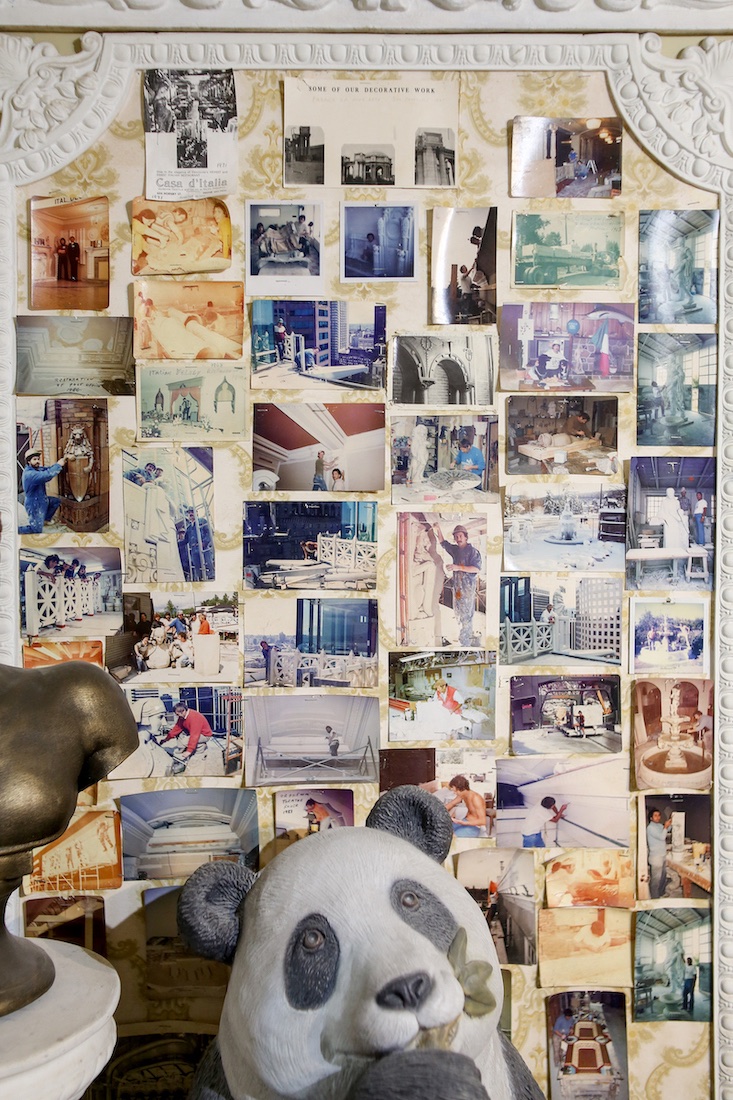
The great reconstruction
Giuseppe (Joe) Tinucci was born in Lucca, Tuscany, in 1930 and came of age during the Second World War.
His family took part in the reconstruction effort that followed. His engineer father worked on damaged infrastructure like roads and bridges. His uncle did similar jobs, skilled at everything from bricklaying to masonry, and Joe worked alongside.
One famous job was the Leaning Tower of Pisa. The city had been heavily bombed, but many landmarks like the tower, suspected to have been used for observation by German soldiers, survived. Joe and his uncle restored some of the pillars.
After studying decorating and sculpting in Florence, Joe worked in Austria and France before returning to Italy, where an acquaintance lured him with the promise of a job in Toronto. In 1956, Joe left for the Canadian city, but upon arrival, the man was nowhere to be found.
Joe made his way to Vancouver, where his wife eventually joined him. He did some jobs with cement, mosaic and tiles before opening his own workshop. One of his first projects in the city was making precast stairs for Simon Fraser University, which opened in 1965.
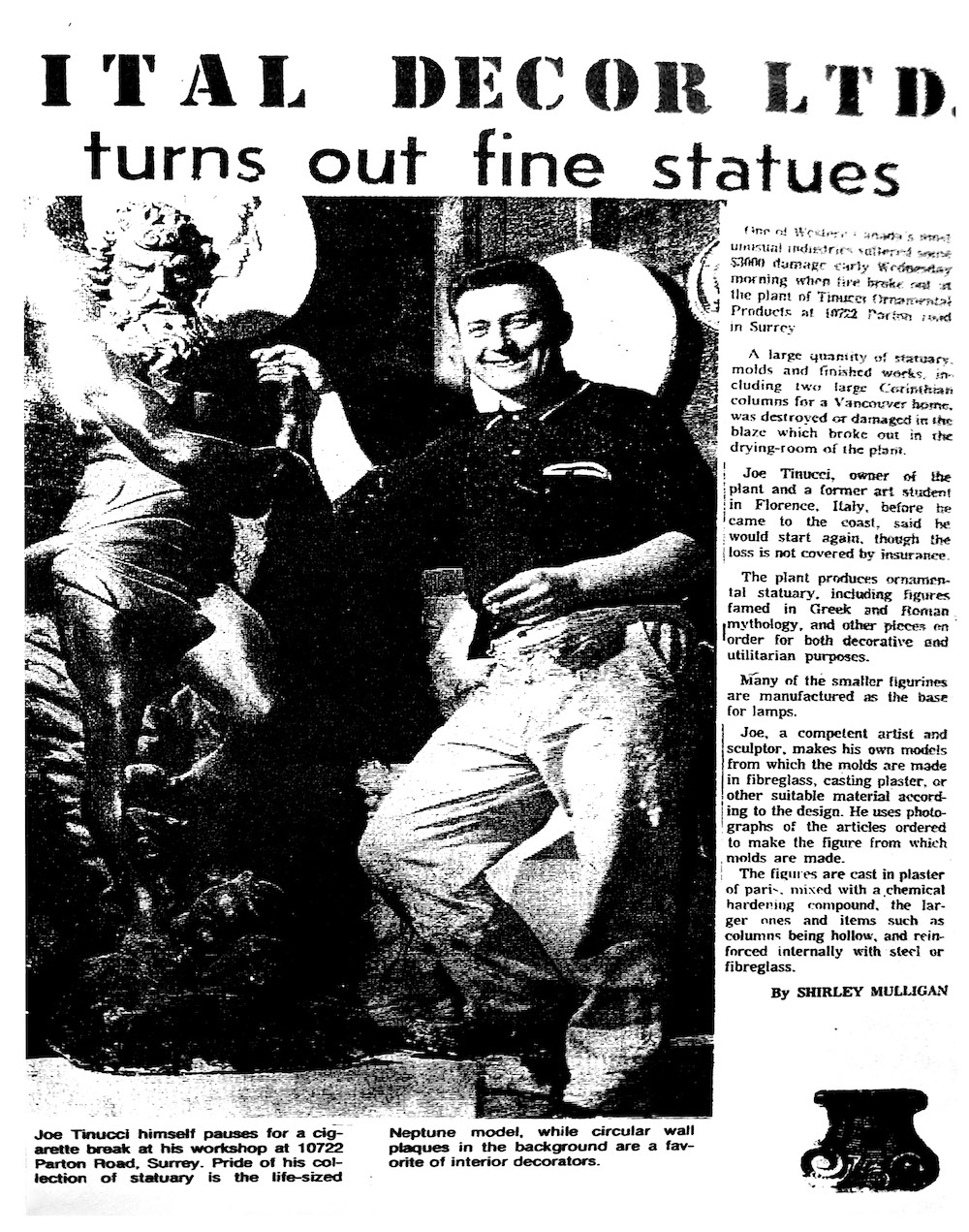
The family, with two young boys in tow, then relocated to Italy, where Joe opened a small factory making synthetic marble for statues. But the Hot Autumn labour strikes proved to be too disruptive, and Joe missed the calm of Canada.
So in 1970, the family decided to return to Vancouver, just as an iconic housing type was going up all over the city — they were called “Italian Specials.”
Icons of immigration
The great postwar migrations brought a strong workforce of labourers from Italy and Portugal to Vancouver. Those builders erected the earliest Specials for families from those places, as well as Germany and Greece.
“We were quite busy doing plaster work for the interior,” said Roberto. “We used to do the fireplaces, the columns, the crown mouldings — all that kind of stuff.”
A lot of brick was used for the arched fireplaces, the first-floor facades and the fences at the front gate, which called for “post ornaments.”
“Homeowners would come to our shop, choose what they wanted and we would make the order: the lions, the balls, the pine cones, the pineapples.”
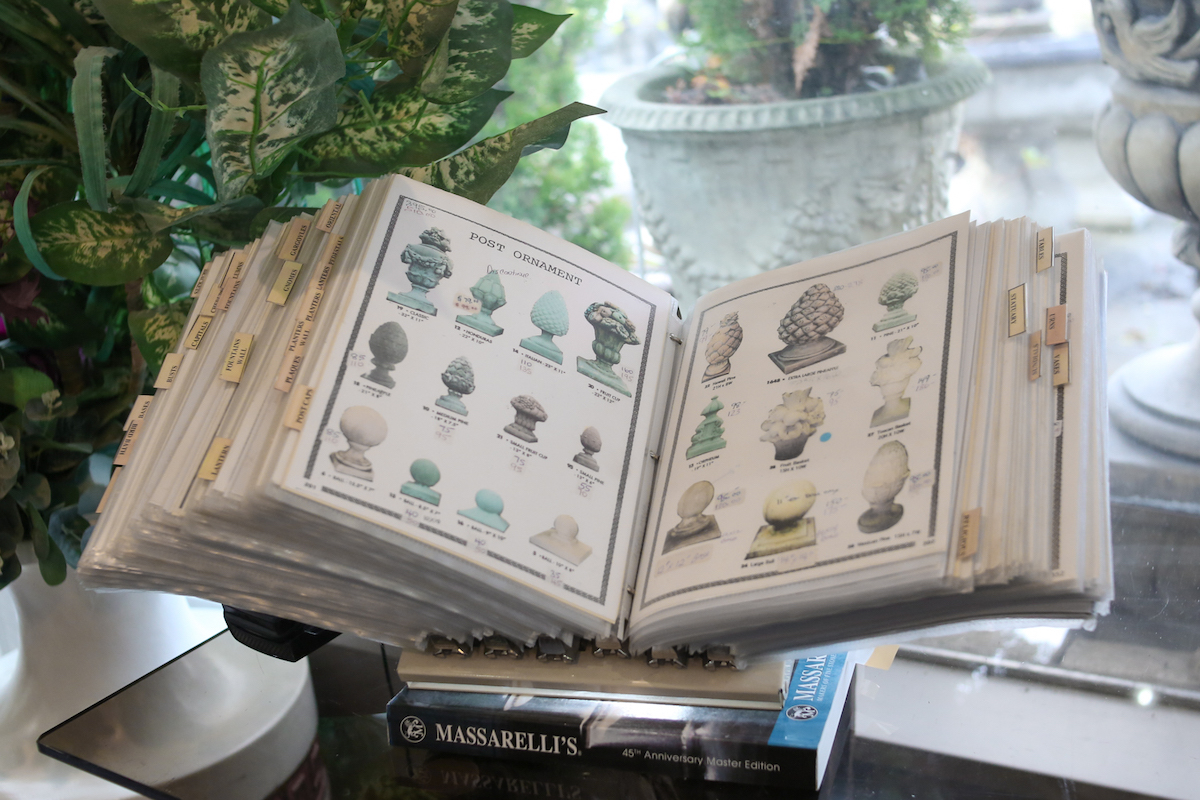
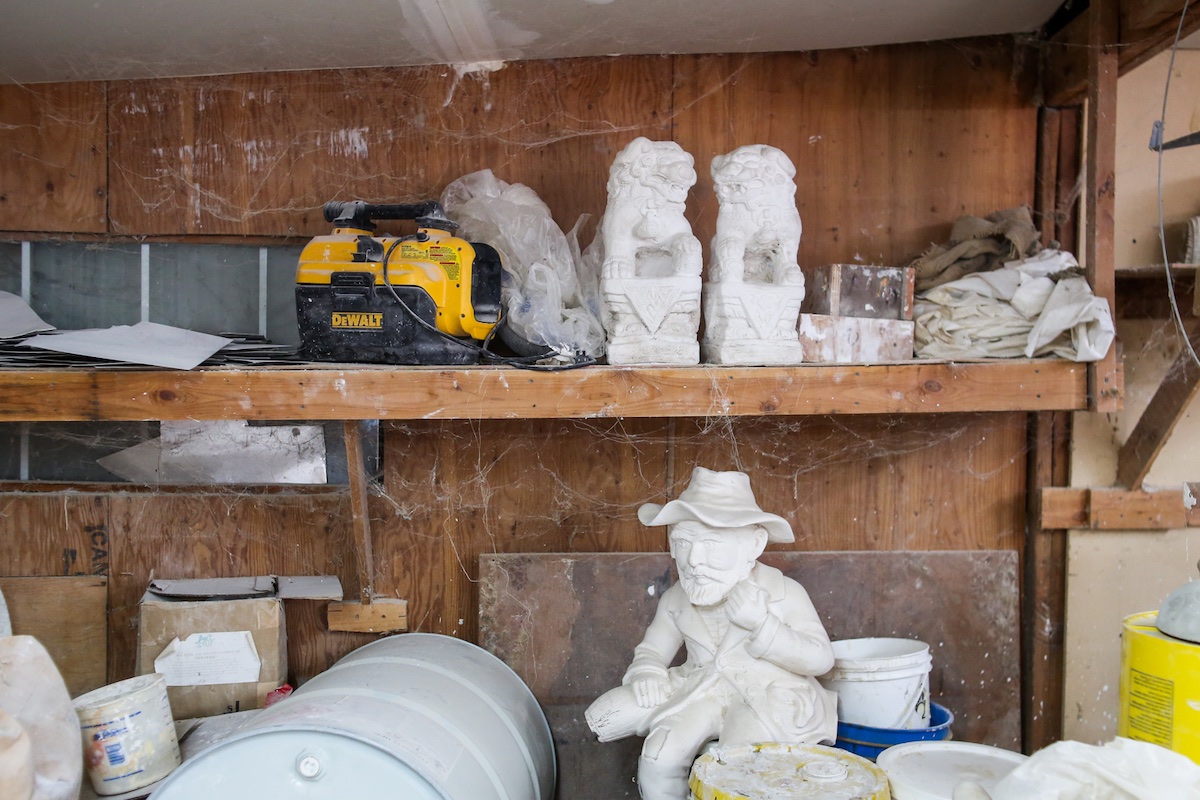
Joe had a friend in Italy who made the ornaments out of marble, and Roberto remembers receiving them by the container. At Ital Decor, they would use the marble ornaments to make moulds with rubber latex, which were then used to create the concrete reproductions attached to the posts at the front of each house.
Near the back of the property, Roberto shows me shelves on which sit rows of large spheres. These, he says, are the moulds. Inside each, an ornament for a Vancouver Special — a lion, a pine cone — is waiting to be born.
Coming from Italy, many of the ornaments have their roots there.
The pine cone, also known as the pigna, symbolizes hospitality and abundance and is often found at entrances. In Vatican City, the giant pine cone part of the Fontana della Pigna dates back to the first century.
Other ornaments likewise speak to symbols of auspiciousness in Italian culture. There’s the acorn, which symbolizes fertility and fresh starts; the putti, cherubs; decorative urns; and other homages to classical art.
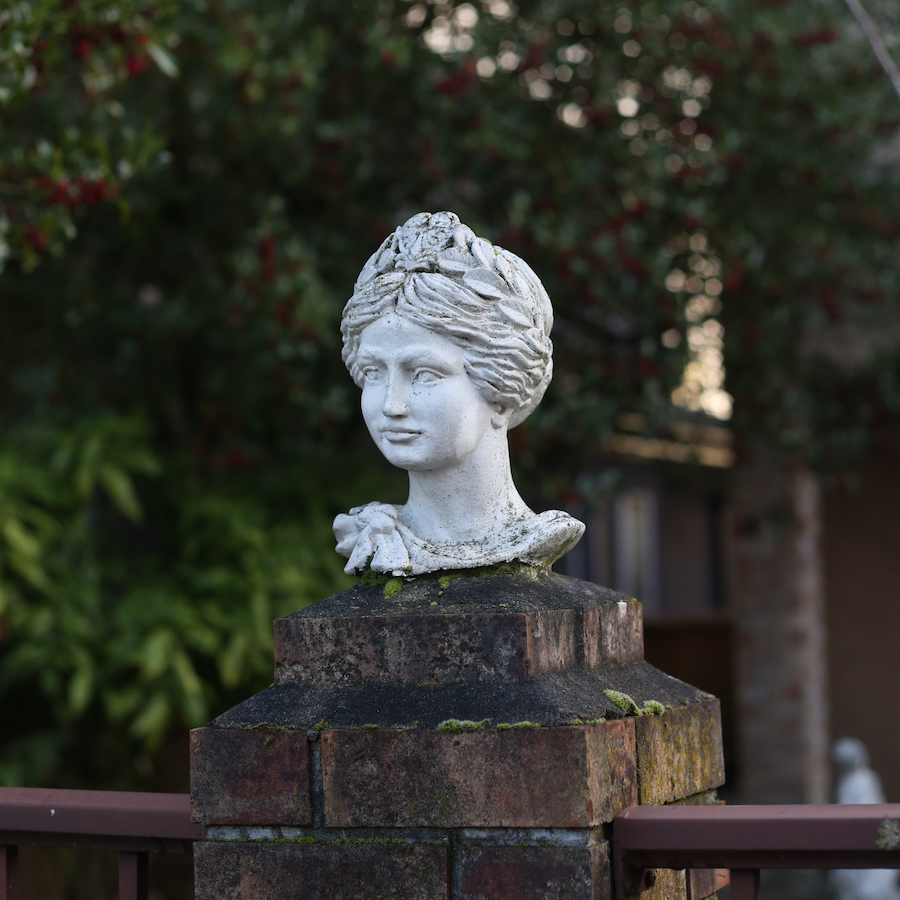
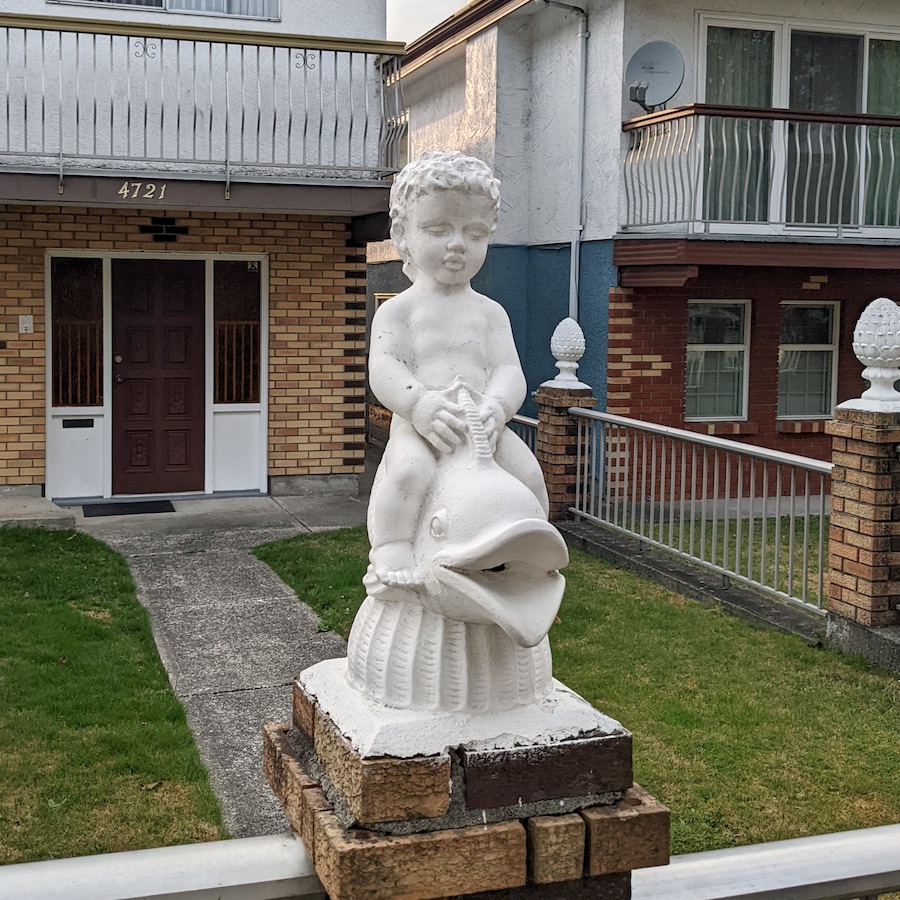
The lion, meanwhile, symbolizes strength and power. The animal has a long history in Vancouver sculpture, with examples like the grand granite pair that guarded what was then the downtown courthouse, and now the art gallery, since 1910. They are close copies of the lions at London’s Trafalgar Square.
As European immigration gave way to Chinese and South Asian newcomers from various homelands and diasporas, they too came from cultures that revere the animal. Ital Decor, adapting with the times, made lions in an eastern style — sometimes called “foo dogs” by English speakers — the same likeness as those that guarded imperial palaces in China.
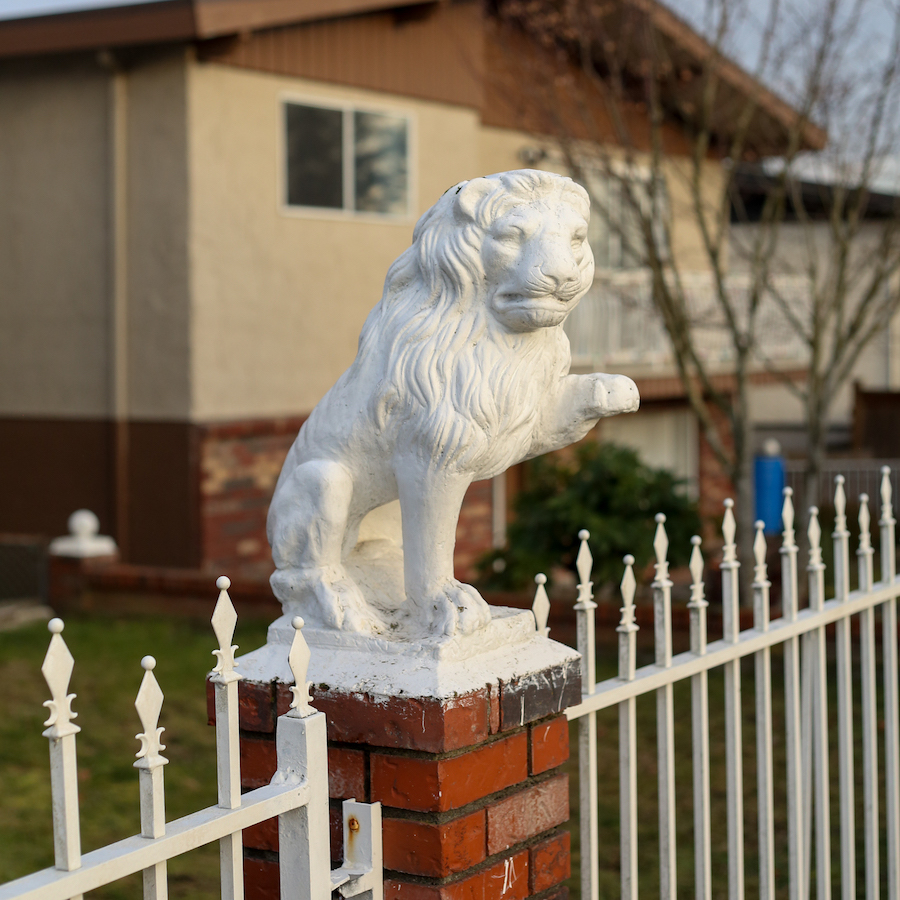
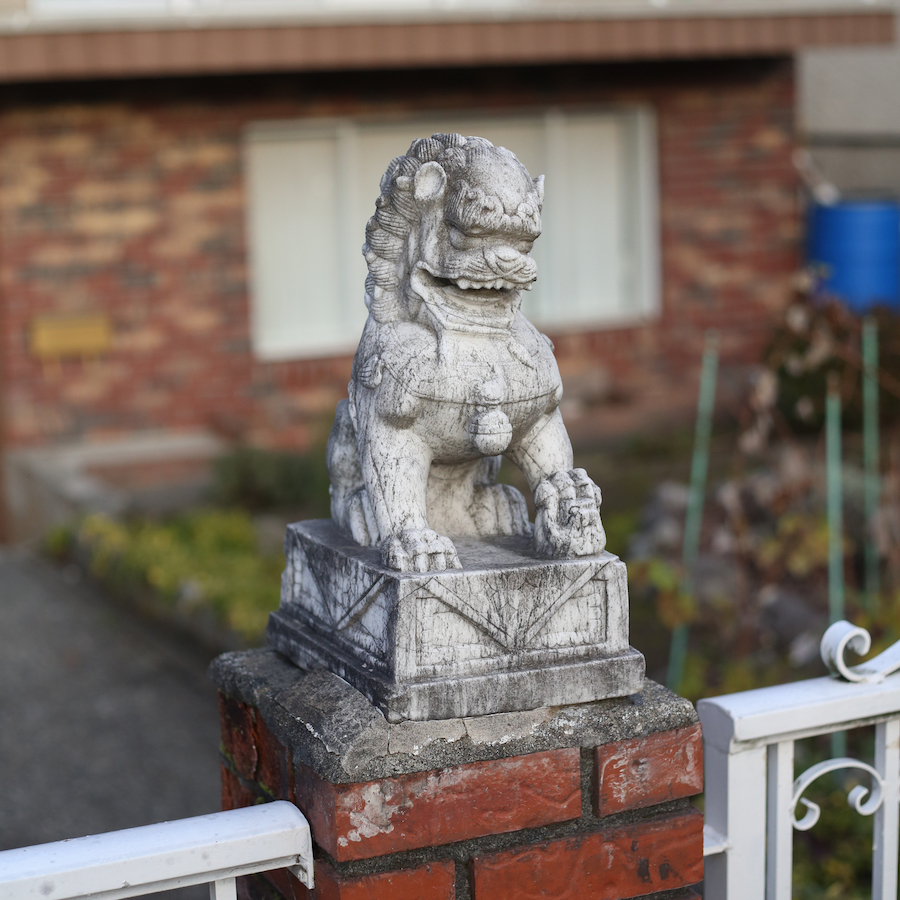
The eagle is a relatively recent symbol in comparison, representing freedom. Americans have used them to decorate their homes after paying off their mortgages.
Of course, there are also the unusual ornaments, like a garden gnome or a gorilla eating a banana, that represent nothing more than the tastes of the homeowner.
Whoever called the Vancouver Special dull didn’t realize its potential for decoration.

The ‘choose-your-own-adventure’ house
Nobody knows who designed the Vancouver Special because nobody really cared to know.
But the house has since received a reputation as a love-to-hate-it Vancouver curiosity. Its name has been used in many places, for an upmarket design store on Main Street and for a local craft brewery’s India pale ale; its image can be found on T-shirts and buttons at local boutiques.
In a city where developers are now building condos ever smaller, critical appraisals of the Special have salivated over its size. The provincial and federal governments have recently begun to craft standardized housing plans like the Special to speed up construction, which media have been calling “Vancouver Special 2.0.” However, there is other important scholarship that surfaces the xenophobia and architectural snobbery that spurred city hall to stymie the spread of the Special in 1984.
There are competing narratives of who the Special’s designer might be, though there is consensus that they worked as a builder. Historical writer Michael Kluckner, in his book Vanishing Vancouver, offers the name of Crawchuck. Another source, from a 1993 dissertation, credits a man named Ben Frith, who said that Specials were designed in response to realtors telling them that families wanted floors with three bedrooms.
The lack of a definitive answer points to the bias against builders at a time when architects were privileged as design authors. An urban planner who wrote a column for Western Homes and Living during the years of Specials called builders “architectural harlots.”
These days, a draftsman named Larry Cudney is often credited as the father of the Special. But sources, including his own stepdaughter, say that he got the design from a builder client of his.
Cudney’s stepdaughter Elizabeth Murphy recalls helping him with plans for the “ugly” house at a young age. “Creating a completely tasteless form of housing was his revenge on the architect profession with which he was in conflict,” she wrote in a piece for the Vancouver Sun. “It also reflected his general miserly approach to living. To be blunt, the man was cheap and proud of it.”
What’s special about the Special?
But was the Special really “tasteless” and “miserly”?
In the thought-provoking thesis “What’s So Special about the Vancouver Special?” Jennifer Chutter counters the suggestion of carelessness behind the Special, pointing instead to the careful considerations behind its construction.
The low-pitched roof is appropriate for the rainy city. The maximalist design took advantage of a city rule that didn’t calculate basements as part of the square footage. The many rooms across two identical floors welcomed custom configurations for growing immigrant families with uncles, aunts, grandparents and others who tagged along to Canada. For those who could just barely afford a mortgage for a Special, the house could be conveniently sectioned off for rentals.
Writers like Kenneth Terriss and Lance Berelowitz deem it a rare housing type indigenous to the West Coast, a design that takes into account climate and topography. All the Tudors and storybooks that are celebrated by the city as “heritage” are styles copied and pasted from other locales. Who needs steep, high-pitched roofs when we don’t get any snow in Vancouver?
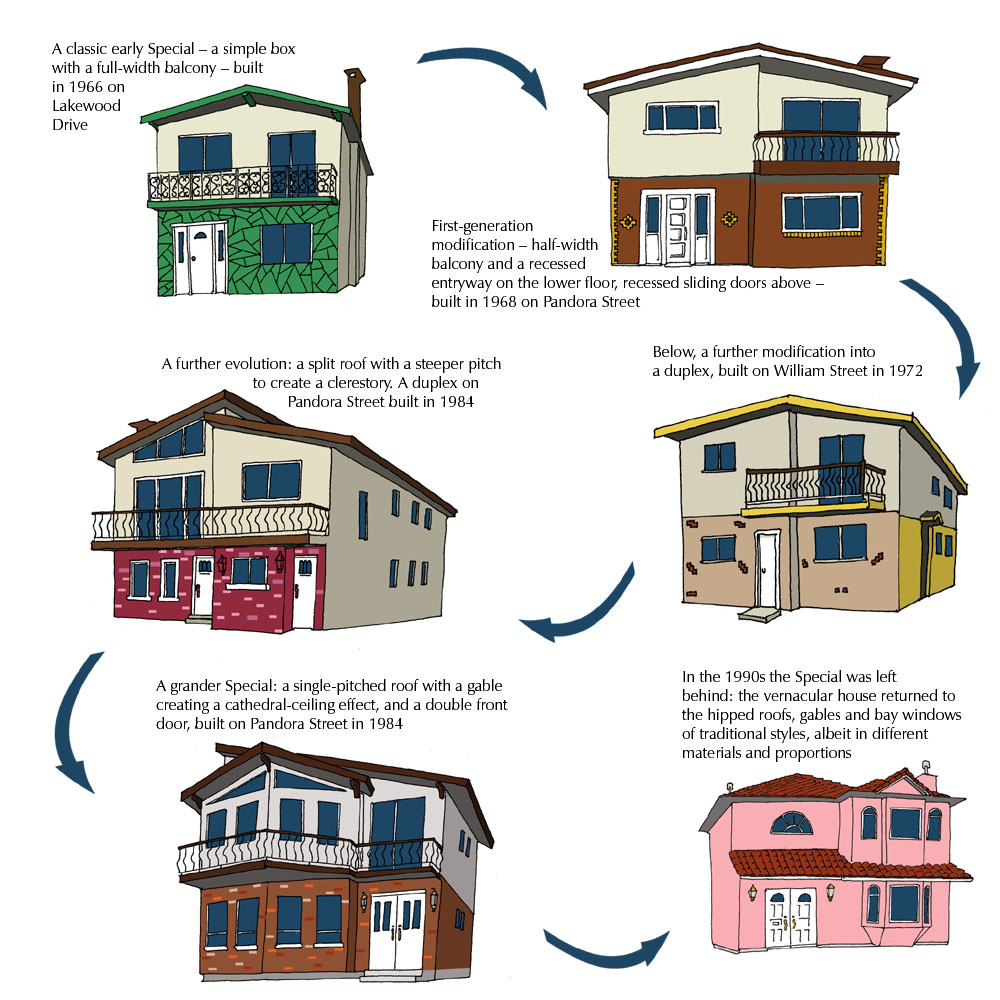
Residents saw the spread of Specials, and the immigrants who lived in them, as stifling the city’s British character. Throughout Vancouver’s history and into the present, white residents have always expressed outrage at the changing class and racial makeup of neighbourhoods.
In a survey conducted by the city in 1980, respondents said that Specials made the city “much more crowded than it used to be,” “reduce[d] the privacy of neighbourhoods” and resulted in “too much old house demo.” These comments, says Chutter, gatekeep what houses and households should look like.
Instead, she says, the Special was a “choose-your-own-adventure house.”
“A lot of people bought them because they suited what their family was at the time. Other [existing] houses regulated what family was: you don’t live with in-laws, you don’t live with uncles, you don’t live with a revolving door of relatives that need a landing pad before moving into their own place.”
Ironically, the City of Vancouver was looking for solutions to housing its growing population and initiatives to make itself more cosmopolitan when it stopped approving Specials in 1984.
“The Special was a clever solution to the city itself,” said Chutter, “and I think that should be celebrated more.”
‘Space is a practised place’
Specials might have been banned, but they survived through new housing types with very similar layouts that blanketed Vancouver. The classic Special has also survived beyond the city’s borders, into Burnaby, where Ital Decor is, and as far as the Okanagan and Vancouver Island.
However, the demand for ornaments at their front gates has slowed significantly since the turn of the millennium.
“Not a lot of people are building those brick fences like they used to,” Roberto told me.
And for the customers who are buying one, perhaps to replace one that’s been damaged, not many choose an animal or natural ornament anymore.
Instead, they buy balls.
“We have a couple of contractors who look for that kind of stuff,” he said, “more simple, more minimalist designs.”
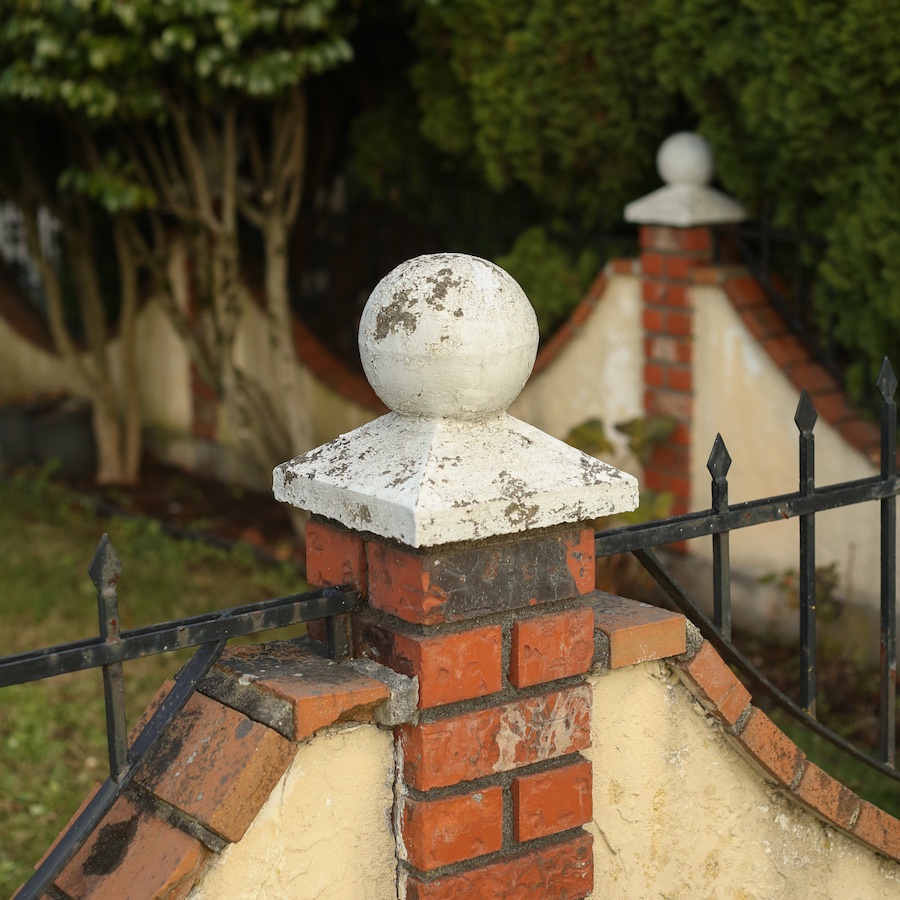
Commercial work has become the bulk of the business, and the family legacy is a point of pride.
“When we go downtown to see a hockey game with a friend, I’ll say, ‘We did this job. We did that job.’ It’s always nice to be able to point stuff out.”
Beyond the statues and heritage buildings, Ital Decor has also worked on a wide range of projects that represent different facets of the city and the region’s recent history.
There are the new condo townhouses and apartments by developers who wanted traditional flourishes. There are the columns and balustrades of west-side mansions, the very dwellings derided by some critics since their appearance in the 1980s as “monster houses.” There are palaces of consumption as the suburbs swell, malls like Metrotown and Richmond Centre, and also columns for Cactus Club restaurants.
Even though new decorations aren’t often made for Specials, the ornaments installed long ago continue to evolve.
They collect moss. They are graffitied. They are further decorated, with custom paint or medical masks given to lions during the COVID-19 pandemic. They are part of gardens that also speak to culture, whether they feature figs and grapes or fuzzy gourds and bitter melon, with vines curling around the fountains and statues of the Virgin and Child. They are part of houses with other important elements, from portraits of saints to ancestral shrines of Chinese folk veneration mounted on the front wall.


“Space is a practised place,” said the French philosopher Michel de Certeau. In relation to urban planning and architecture, spaces might be defined by those who design them, but he argues that they are transformed by those who use them.
The Vancouver Special — hated by some for what they were, loved by others for what they offered — is the perfect example of this, as generations of working-class immigrant families took the basic box and made it a home, decorating it with symbols and gardens that speak to who they are.
The house is special because each can be made specific. And even though there are over 10,000 of them across the city, no two are the same. ![]()
Read more: Urban Planning




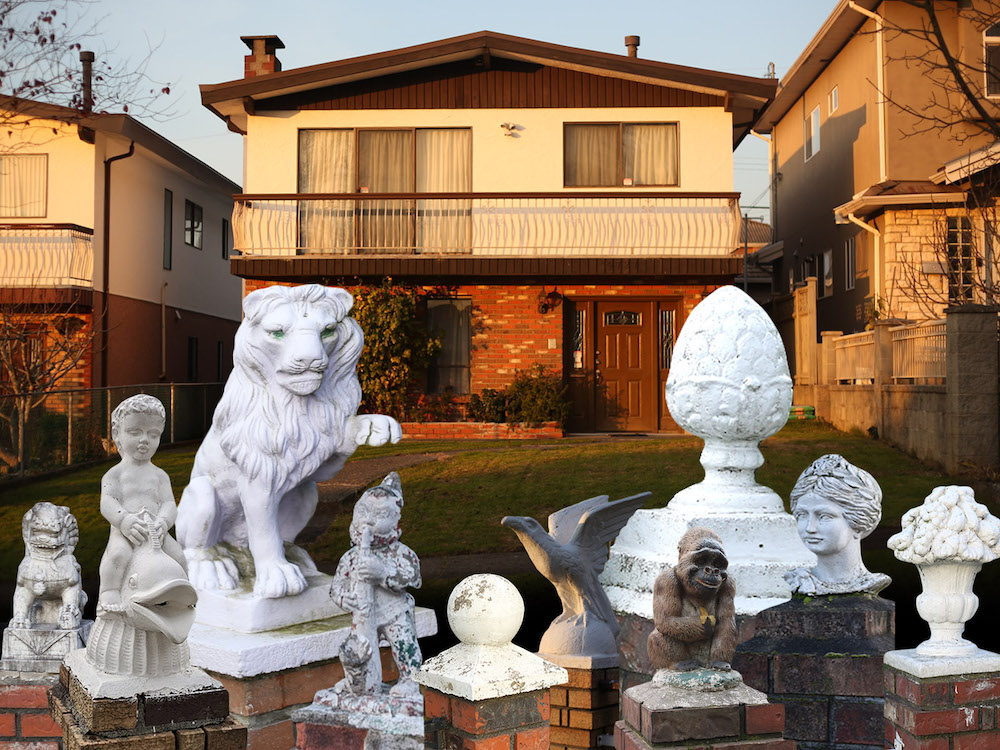








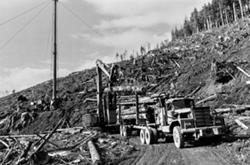


Tyee Commenting Guidelines
Comments that violate guidelines risk being deleted, and violations may result in a temporary or permanent user ban. Maintain the spirit of good conversation to stay in the discussion and be patient with moderators. Comments are reviewed regularly but not in real time.
Do:
Do not: